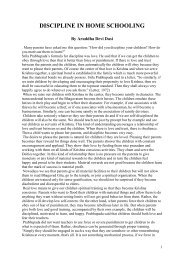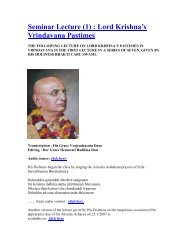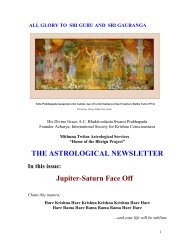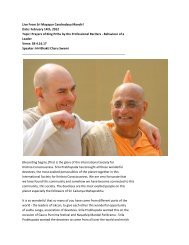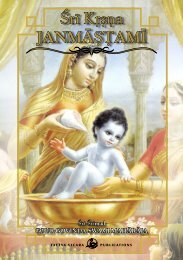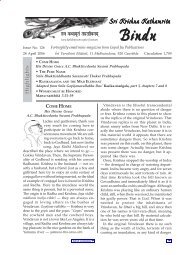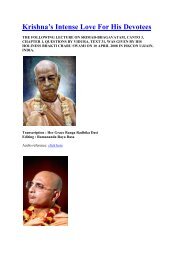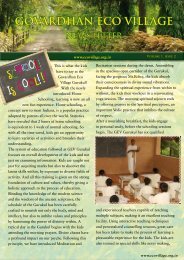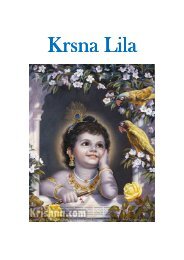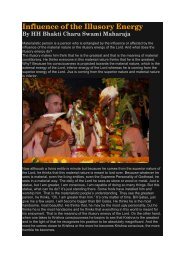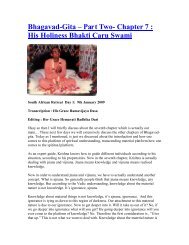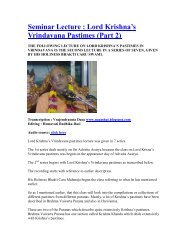Ramanujacharya â Biography - ebooks - ISKCON desire tree
Ramanujacharya â Biography - ebooks - ISKCON desire tree
Ramanujacharya â Biography - ebooks - ISKCON desire tree
Create successful ePaper yourself
Turn your PDF publications into a flip-book with our unique Google optimized e-Paper software.
all in all, and not consider the underlying basis ofexistence, which is God.In commenting on the the second aphorism of theVedanta-sutra, janmady asya yatah, Ramanuja establishesthat all manifestations from the Supreme Reality must alsobe real. The sutra states that Brahman is that from whicheverything else has come into being. Because it does notstate that Brahman is that from which the illusion ofmanifestation arises, it must be accepted that themanifestation are not illusory.The philosophy Ramanuja presented as a logicalalternative to that of Sankara is called Visistadvaita-vada,or qualified oneness. It is accepted that there is anunderlying unity to all existence, but this oneness ofBrahman is qualified by variety. Three categories arerecognized , which are distinct from one another , buttogether comprise a unity. These are cit , the individualliving beings, acit, inert matter and Isvara, thecontroller-God. Cit and acit are seen as the body of Godand thus are dependent upon Him, just as the body isdependent on the soul and cannot exist without it. This ideaof matter and living beings comprising the body of God isessential for understanding the relationship between them.There is unity between the body and soul, yet a realdistinction is recognized.Transformation takes place within the world, and thiscannot be dismissed as illusion. Sankara tried toestablished that nothing exists except for the oneundifferentiated, changeless Brahman. Transformation isreal, but it pertains only to the cit and acit; Isvararemains eternally changeless. Just as transformation affectsthe body although the soul is unaffected, so the universeand the living beings, the body of God, are subject tovarious transformations; He remains eternally changeless.The distinctions between the three categories are real; but,because the cit and acit are dependent on Isvara, theycannot be looked upon as being separate from Him. The livingbeings are inseparable from Brahman, though they aresubstantive realities and thus qualify Brahman as the bodyqualifies the soul. This is the meaning of Visistadvaita, orqualified oneness.In describing the individual soul, Ramanuja followedclosely the teachings given by Yamunacarya in the Siddhitraya.Although atomic in size, the soul spreads theconsciousness throughout the body, like the rays coming fromthe lamp. As the body of God, the individual living beingsare totally dependent on Him, but He allows them the freewill to act as they <strong>desire</strong>. In fact He creates thefacility that enables them to enact their various <strong>desire</strong>s.Thus complete dependence on God does not interfere with thefree will of the individual. The only exception to thisgeneral rule are with regard to those who are particularlydevoted to God and those particularly inimical towards Him.7




